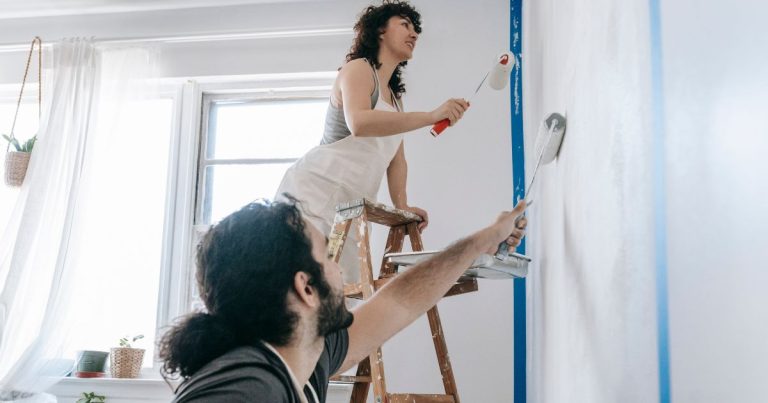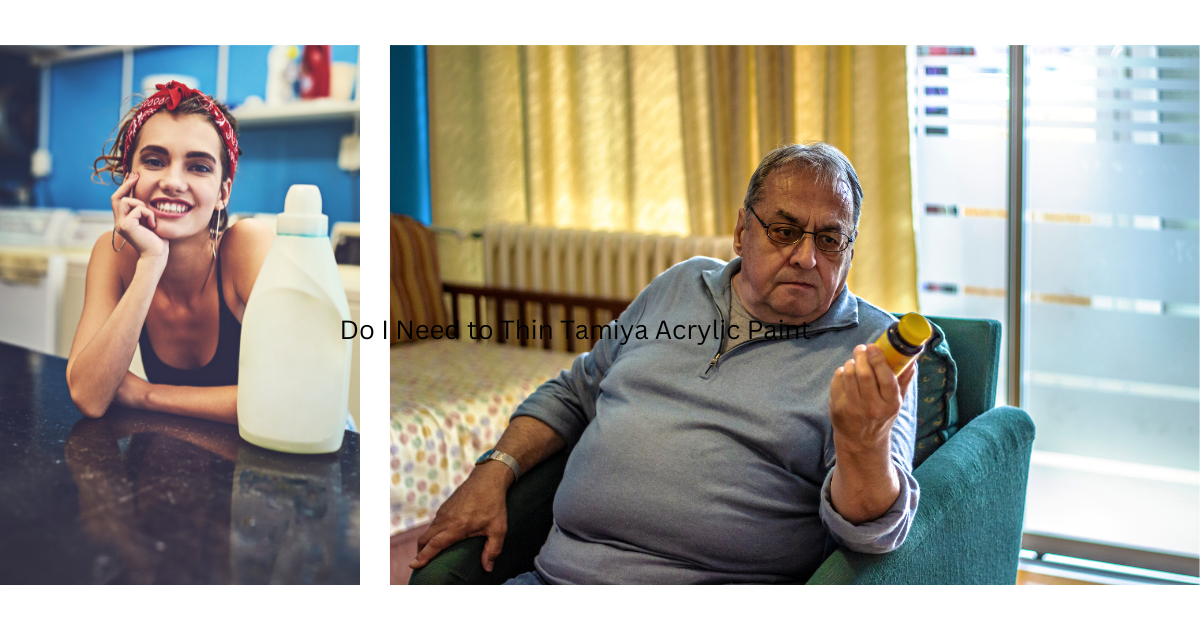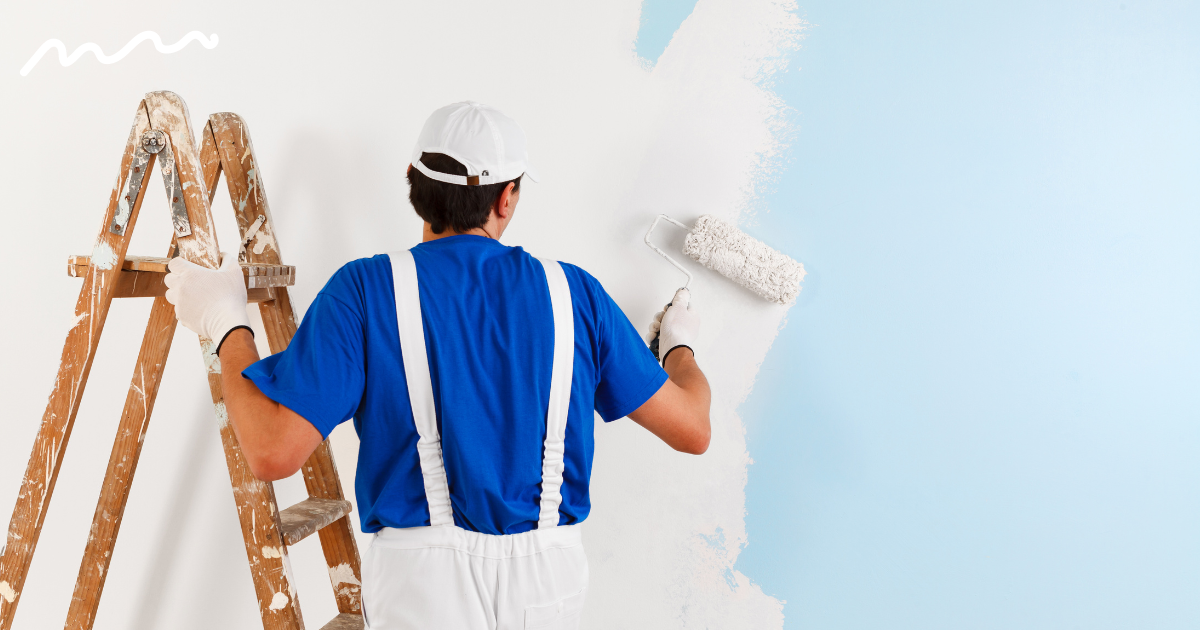There are a few ways to fix lumpy acrylic paint. One way is to add a bit of water to the paint and mix it well until the consistency is smooth again. Another way is to put the paint through a sieve or strainer to remove any lumps.
Finally, you can try heating the paint up slightly (either in a bowl set over boiling water or in the microwave) and stirring until it becomes smooth again.
- If your paint is too thick, add a little bit of water and mix it together until it reaches the desired consistency
- If your paint is too thin, add a little bit of acrylic medium or gel to thicken it up
- Use a palette knife to mix the paint and help eliminate any lumps that might be present
- If needed, strain the paint through a fine mesh strainer to remove any remaining lumps before using it
042 Getting Rid Of Lumps in Paint
How Do You Smooth Bumpy Acrylic Paint?
If you have ever painted with acrylics, then you know that sometimes the paint can go on a little bit bumpy. This is especially true if you are painting over an old surface that has already been painted or primed. There are a few ways that you can smooth out your paint to get rid of those pesky bumps.
One way to smooth out your paint is to add a layer of gesso before you start painting. Gesso is a white liquid primer that will help to create a smooth surface for your paint to adhere to. You can apply gesso with a brush or roller and let it dry before beginning to paint.
another way to achieve a smooth surface is by sanding down your painting surface before beginning to paint. This will create an even surface for the paint to cling onto and will minimize the appearance of any bumps. Once you have applied your gesso or sanded down your surface, you are ready to start painting!
If you find that there are still some bumps in your paint after applying these methods, then you can try using a thinner brush or adding more layers of paint until the desired effect is achieved.
Why Does My Paint Look Clumpy?
If your paint looks clumpy, it’s likely because the paint has become too thick. This can happen for a number of reasons:
- The paint was stored in a cool place and the temperature caused it to thicken
- The paint was left open for too long and the evaporation caused it to thicken
- The paint was mixed with another type of paint or substance that made it thicker To fix this problem, you’ll need to thin out the paint.
This can be done by adding a thinner, such as water for latex paints or mineral spirits for oil-based paints. Start with a small amount and mix it in well before adding more until the desired consistency is reached.
How to Fix Lumpy Acrylic Paint on Canvas
If you’ve ever had the misfortune of dealing with lumpy acrylic paint on your canvas, you know it can be a real pain to try and fix. But don’t worry, there are a few things you can do to salvage your painting! The first thing you’ll want to do is identify the source of the lumps.
If the paint is old and has been sitting in your studio for a while, it’s likely that the lumps are due to dried-out paint. In this case, you can try rehydrating the paint by adding a bit of water to it and stirring gently. If the paint is new but still lumpy, it’s possible that it was improperly mixed before being applied to the canvas.
In this case, you’ll need to remix the paint thoroughly before trying again. Once you’ve identified and fixed the source of the problem, apply a thin layer of gesso over your painting to even out any texture irregularities. Allow the gesso to dry completely before proceeding with your painting as usual.
With these tips in mind, you should be able to fix lumpy acrylic paint on your canvas without too much trouble!
How to Rehydrate Dried Acrylic Paint
If you have ever tried your hand at painting, chances are you have used acrylic paint. Acrylic paint is a popular choice among painters because it is very versatile. You can use it on almost any surface, and it dries quickly.
However, sometimes you may want to rehydrate dried acrylic paint so that you can use it again. Here is a step-by-step guide on how to do just that:
- Begin by adding some water to the dried paint. Add enough water so that the paint is completely covered and start stirring.
- Continue stirring until the paint has reached a creamy consistency. If the paint is still too thick, add a little more water until it reaches the desired consistency.
- Once the paint has been rehydrated, you can start using it again just like you would fresh acrylic paint! Experiment with different techniques and enjoy creating new works of art.
Why is My Acrylic Paint So Thick
Acrylic paint is a water-based paint, which means that it should have a consistency that is similar to water. However, sometimes acrylic paint can become thick and difficult to work with. There are a few reasons why this might happen:
The first reason is that the paint has simply been sitting around for too long and has started to dry out. If this is the case, you can try adding a few drops of water to the paint and stirring it until it reaches the desired consistency. Another possibility is that the paint was stored in an airtight container without enough air circulation.
This can cause the paint to thicken and become gummy. To fix this, transfer the paint to a different vessel and add a small amount of water until it reaches the desired consistency. Finally, if your acrylic paint is still within its expiration date but has thickened nonetheless, it may be due to humidity in your environment.
Again, thinning the paint with some water should do the trick!
Conclusion
If your lumpy acrylic paint is giving you trouble, there are a few things you can do to fix it. First, try stirring the paint with a wooden spoon or other stirring tool. If that doesn’t work, you can pour the paint into a strainer and catch the lumps as they fall through.
Once you have strained the paint, put it back in the container and shake it well. This should get rid of most of the lumps. If there are still some lumps left, you can try adding a bit of water to the mix and stirring it again.










